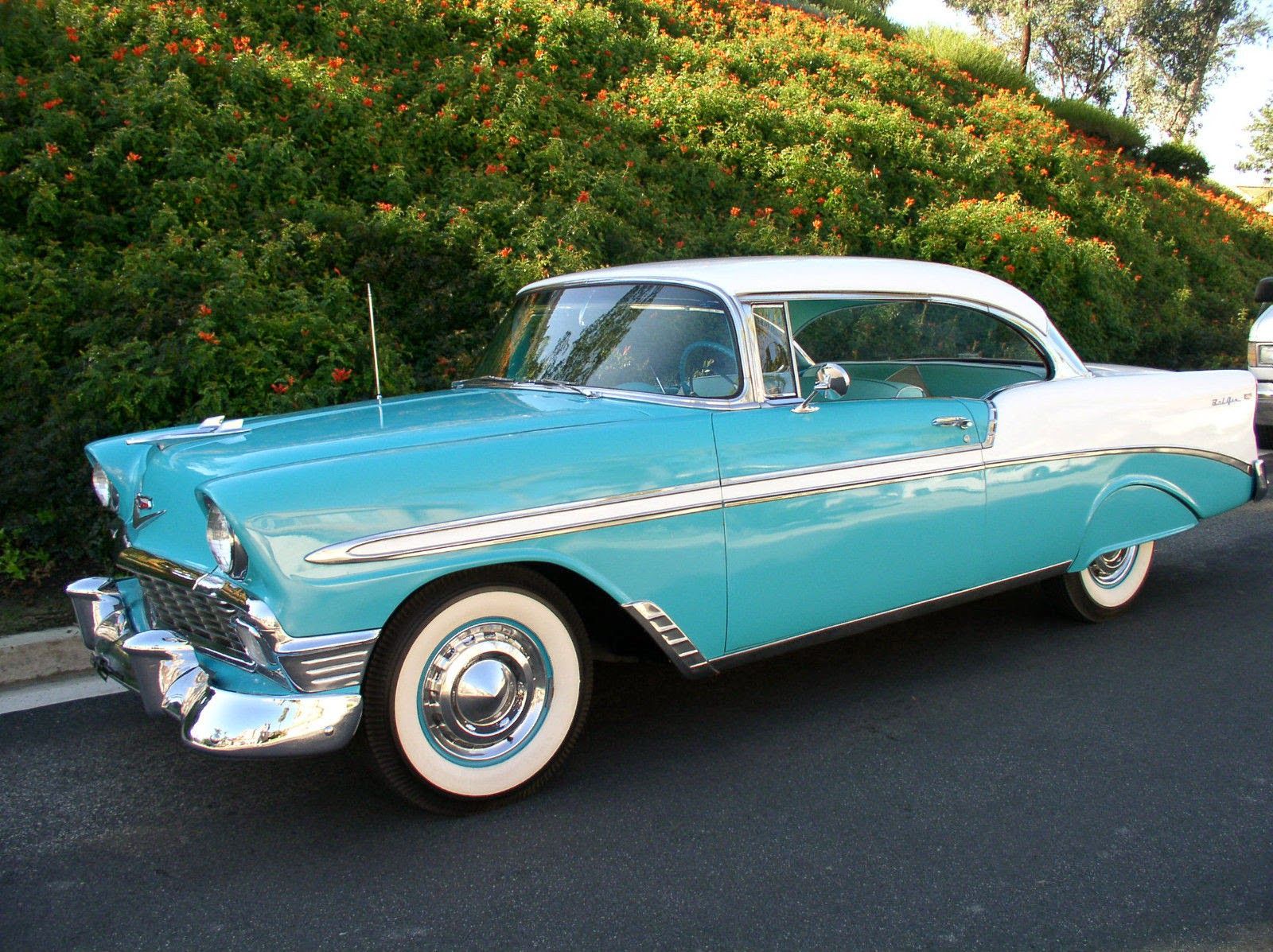
The roar of a high-performance engine, the sleek lines of a luxury sedan, or the sheer utility of a powerful pickup—these are more than just vehicles. They represent significant investments, personal passions, and often, extensions of our identity. Unfortunately, across the United States, they are also increasingly alluring targets for sophisticated auto thieves. While the image of a car thief hot-wiring a vintage ride might persist in popular culture, modern vehicle theft is far more complex, incorporating everything from tech exploits to viral social media trends and, sadly, common owner oversights.
The landscape of vehicle theft is constantly evolving, with criminals adapting their methods to exploit new vulnerabilities and capitalize on market demands. Organizations like the Highway Loss Data Institute (HLDI) and the National Insurance Crime Bureau (NICB) consistently shed light on the types of vehicles most at risk and, crucially, the “how” behind their disappearance. This isn’t just about expensive sports cars, though they certainly capture attention; it’s about understanding the underlying reasons why any high-value or highly sought-after vehicle might be targeted.
Our aim here is to pull back the curtain on these cunning tactics, offering a comprehensive look at the 14 most common ways these coveted machines are stolen. By dissecting the vulnerabilities and methods—from specific technological loopholes to broader systemic issues and preventable human errors—we hope to empower owners with the knowledge needed to protect their prized possessions. Understanding these threats is the first, most crucial step in staying one step ahead of those looking to boost your ride.
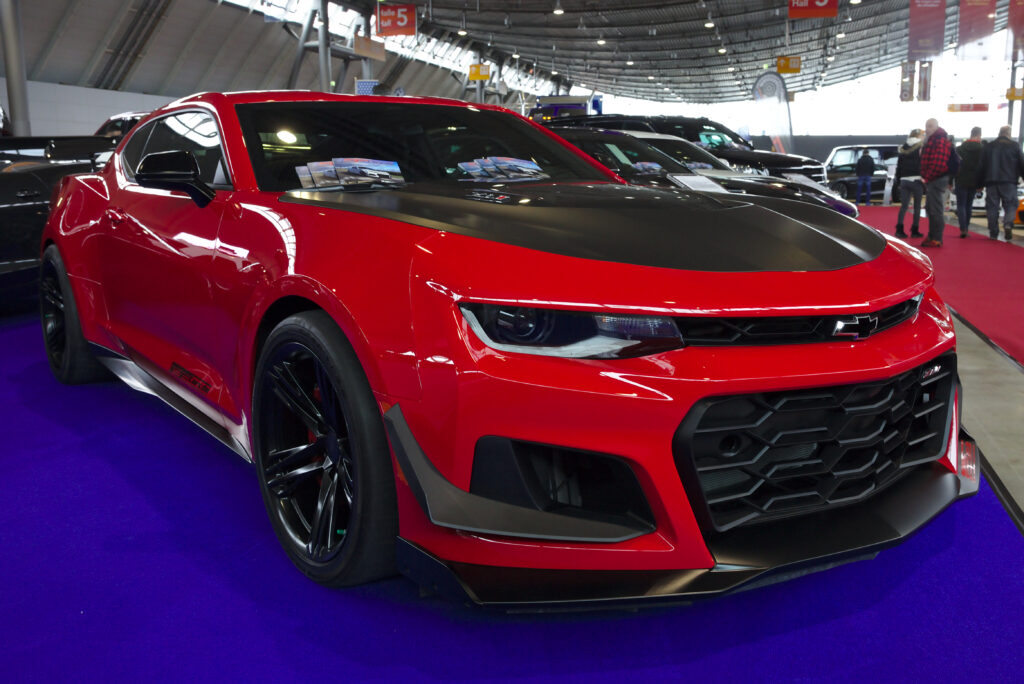
1. **Exploiting On-Board Diagnostic Ports**Modern vehicles, particularly high-performance models, are computers on wheels, replete with on-board ports that store extensive vehicle data. While designed for diagnostics and maintenance, these ports present a significant vulnerability that savvy thieves eagerly exploit. This method is especially salient for high-value targets like the Chevrolet Camaro ZL1, retailing around $75,400.
A new HLDI report reveals the Chevrolet Camaro ZL1 “had a theft rate 39 times higher than the average for all vehicles with the model years 2022 to 2024.” This staggering statistic isn’t solely due to desirability, but also a specific technological Achilles’ heel. Matt Moore, chief insurance operations officer at HLDI, noted that “In the case of Camaro ZL1, it is very desirable to thieves, and, on top of it, there’s a vulnerability that makes them relatively easy to steal.”
This exploit involves using “the right knowledge and right bits of technology” to gain access to the inside of these Camaros, allowing them to be “stolen relatively easily,” as Moore explained to CBS MoneyWatch. It bypasses traditional ignition systems, leveraging the car’s internal network against itself. This highlights a growing trend where digital vulnerabilities are as critical as physical security.
Recognizing this flaw, General Motors responded earlier this year with a software update for 2020 to 2024 Camaro models. A GM spokesman stated that “This body control module software enhancement involves an important security update for certain model year 2020 to 2024 Chevrolet Camaros.” The ongoing battle against evolving theft methods underscores the importance of staying current with manufacturer-issued security patches.
Car Model Information: 2018 Chevrolet Camaro 1LS
Name: Chevrolet Camaro
Manufacturer: Chevrolet
Production: 1966–2002,2009–2023
ModelYears: 1967–2002,2010–2024
Class: Pony car
BodyStyle: coupe,convertible
Platform: GM F platform,GM Zeta platform,GM Alpha platform
Layout: Front-engine, rear-wheel-drive layout
Categories: 1970s cars, 1980s cars, 1990s cars, 2+2 coupés, 2000s cars
Summary: The Chevrolet Camaro is a mid-size American automobile manufactured by Chevrolet, classified as a pony car. It first went on sale on September 29, 1966, for the 1967 model year and was designed to compete with the Ford Mustang. The Camaro shared its platform and major components with the Firebird, produced by General Motors’ Pontiac division that was also introduced for the 1967 model year.
Four distinct generations of the Camaro were developed before production ended in 2002. The nameplate was revived on a concept car that evolved into the fifth-generation Camaro; production started on March 16, 2009.
Production of the sixth generation of the Camaro ended in December 2023, for the 2024 model year.
Get more information about: Chevrolet Camaro
Buying a high-performing used car >>>
Brand: Chevrolet Model: Camaro
Price: $18,785 Mileage: 69,196 mi.

2. **Targeting High Horsepower Muscle Cars**Beyond specific digital vulnerabilities, the inherent characteristics of certain vehicles, like raw power and performance, make them irresistible to thieves. Muscle cars are a prime example, drawing criminals explicitly “looking for vehicles with high horsepower.” This explains why models such as the Chevrolet Camaro, a high-performance sports car, consistently appear on lists of frequently stolen vehicles.
The allure of horsepower extends beyond mere joyriding; these powerful engines and associated components can command high prices in illicit markets. They are either resold as whole vehicles in different jurisdictions or dismantled for parts. The prestige and capability of these vehicles translate directly into their value, both legitimate and illegitimate.
The Chevrolet Camaro, with a theft rate 13 times higher than average for 2022-2024 models, exemplifies this appeal. Even its lower-cost versions, retailing between $32,495 and $50,000, are highly sought after. This consistent targeting demonstrates that the desire for power and performance remains a significant driver for auto theft, irrespective of specific digital weaknesses.
Thieves understand the market for these vehicles and their components. Muscle cars represent a certain tier of desirability and capability that translates into tangible value, making them attractive targets for those seeking to profit from illicit activities. This combination of thrill and potential profit creates a strong incentive for theft.
Car Model Information: 2018 Chevrolet Camaro 1LS
Name: Chevrolet Camaro
Manufacturer: Chevrolet
Production: 1966–2002,2009–2023
ModelYears: 1967–2002,2010–2024
Class: Pony car
BodyStyle: coupe,convertible
Platform: GM F platform,GM Zeta platform,GM Alpha platform
Layout: Front-engine, rear-wheel-drive layout
Categories: 1970s cars, 1980s cars, 1990s cars, 2+2 coupés, 2000s cars
Summary: The Chevrolet Camaro is a mid-size American automobile manufactured by Chevrolet, classified as a pony car. It first went on sale on September 29, 1966, for the 1967 model year and was designed to compete with the Ford Mustang. The Camaro shared its platform and major components with the Firebird, produced by General Motors’ Pontiac division that was also introduced for the 1967 model year.
Four distinct generations of the Camaro were developed before production ended in 2002. The nameplate was revived on a concept car that evolved into the fifth-generation Camaro; production started on March 16, 2009.
Production of the sixth generation of the Camaro ended in December 2023, for the 2024 model year.
Get more information about: Chevrolet Camaro
Buying a high-performing used car >>>
Brand: Chevrolet Model: Camaro
Price: $18,785 Mileage: 69,196 mi.
Read more about: From Showroom Shame to Collector’s Dream: The Flops That Became Automotive Icons

3. **Vulnerability Due to Lack of Engine Immobilizers**A significant, widely publicized vulnerability contributing to vehicle theft, especially among non-sports cars that have recently surged in stolen vehicle rankings, is the absence of engine immobilizers. Many older Kia and Hyundai models, specifically those manufactured between 2011 and 2021, lacked this crucial anti-theft device as a cost-saving measure, leading to dramatic consequences for owners.
An engine immobilizer prevents a car’s engine from starting without the correct key or transponder. Its absence means a vehicle can be started easily through simpler methods. As Maya Afilalo, managing editor and industry analyst at AutoInsurance.com, explains, “Normally, to start a car without a key, you need to manually connect electrical wires—aka hot-wiring—which requires opening up the dash.” However, for these vulnerable models, the process was far less involved.
The impact is stark: Nicholas Zeitlinger, NICB public affairs specialist, noted that “Before the trend started, these models did not appear on our top 10 most stolen vehicles lists.” Suddenly, vehicles like the Hyundai Elantra, Sonata, Kia Optima, Soul, Forte, and Sportage began dominating, a direct consequence of this design flaw.
Cities reported massive spikes. Chicago’s 2022 records showed Kia and Hyundai accounted for “41% of all car thefts in the city,” while Seattle saw a “620% increase in Kia and Hyundai thefts between 2021 and 2022.” This systemic vulnerability turned everyday vehicles into exceptionally easy targets, causing widespread frustration for owners and significant legal action.
Car Model Information: 2025 Honda Civic Sport
Name: Hyundai Motor Company
NativeName: 현대자동차 주식회사
Logo: Hyundai Motor Company logo.svg
Type: Public company
TradedAs: [object Object],lse
Foundation: start date and age
Founder: Chung Ju-yung
LocationCity: Seoul
LocationCountry: South Korea
KeyPeople: ubl
AreaServed: Worldwide
Industry: Automotive industry
Production: decrease 4,146,335 vehicles
ProductionYear: 2024
Revenue: increase}} {{SK won
RevenueYear: 2024
OperatingIncome: decrease}} {{SK won
IncomeYear: 2024
NetIncome: increase}} {{SK won
NetIncomeYear: 2024
Assets: increase}} {{SK won
AssetsYear: 2024
Equity: increase}} {{SK won
EquityYear: 2024
Owners: Hyundai Mobis
NumEmployees: 126,407
NumEmployeesYear: 2024
Parent: Hyundai Motor Group
Divisions: unbulleted list
Subsid: Collapsible list
Homepage: https://hyundai.com
Child: no
Hangul: ^현대_자동차 주식회사
Hanja: 現代自動車株式會社
Ipa: ipa
Categories: All Wikipedia articles in need of updating, All articles containing potentially dated statements, All articles needing additional references, All articles to be expanded, All articles with dead external links
Summary: Hyundai Motor Company, often referred to as Hyundai Motors (Korean: 현대자동차) and commonly known as Hyundai (현대; [ˈhjəːndɛ]; ‘modernity’), is a South Korean multinational automotive manufacturer headquartered in Seoul, South Korea, which was founded in 1967. Currently, the company owns 33.88 percent of Kia Corporation, and owns a luxury cars subsidiary, Genesis. The three brands altogether make up the Hyundai Motor Group.
Hyundai operates the second largest automobile manufacturing facility in the world in Ulsan, South Korea which has an annual production capacity of 1.6 million units. The company employs approximately 75,000 people worldwide. Hyundai vehicles are sold in 193 countries through 5,000 dealerships and showrooms. As of November 2024, Hyundai is the world’s third-largest carmaker in terms of production, behind competitors Toyota and Volkswagen.
Get more information about: Hyundai Motor Company
Buying a high-performing used car >>>
Brand: Kia and Hyundai Model: older models
Price: $26,923 Mileage: 1,460 mi.
Read more about: Unpacking the Unsettling Rise in Car Thefts: A Consumer Reports Guide to Understanding and Protecting Your Vehicle

4. **Viral Social Media Theft Methods**In our digital age, social media has unfortunately played an unprecedented role in fueling vehicle theft. For vulnerable models, particularly Hyundai and Kia vehicles lacking engine immobilizers, a viral TikTok “challenge” became a de facto training manual for car thieves, dramatically escalating theft rates through the #KiaBoyz trend.
The “challenge” publicly demonstrated a shockingly simple method to steal certain Kia and Hyundai vehicles. Afilalo elaborated, stating, “individuals discovered that Kias and Hyundais could be stolen more simply by removing the ignition module cover and lock, and sticking a USB into the key slot to start the car.” This bypassed traditional “hot-wiring,” making theft accessible even to inexperienced criminals.
Zeitlinger directly cited the “#KiaBoyz trend as the most likely cause of sedans taking the top spots on NICB’s vehicle-theft list.” The ease of sharing these instructional videos on platforms like TikTok meant a vulnerability known to some quickly became common knowledge, democratizing car theft in an alarming way.
The sheer volume of thefts resulting from this trend underscores a new dimension in vehicle security: widely disseminated information. While manufacturers like Hyundai and Kia now offer software and hardware upgrades, including immobilizer software, the damage from this social media phenomenon has been extensive, leading to a “total settlement value of $200 million” to address affected vehicles.
Read more about: The 9 Worst-Designed Consumer Products of the Last 5 Years: A Critical Look at Tech’s Biggest Flops

5. **High Demand for Aftermarket Parts**Not all vehicle thefts aim for a complete car; often, the true motivation lies in the robust and lucrative market for individual components. This phenomenon particularly targets popular models like Honda Civics, Accords, and various full-size pickup trucks, whose widespread presence ensures a constant demand for replacement parts, both legitimate and illicit.
Maya Afilalo highlights this economic incentive, explaining that “Honda Civics and Accords rank among the most stolen vehicles, largely because their popularity creates a high demand for stolen parts.” These ubiquitous cars mean their parts are constantly needed for repairs, feeding a shadow market where stolen components are quickly offloaded and integrated into other vehicles.
Full-size pickup trucks, such as the Chevrolet Silverado 1500 and Ford F-150, also fall squarely into this category. Afilalo notes, “Pickup trucks had long been popular targets for theft due to their high resale value and high demand for their parts.” These workhorse vehicles require frequent replacement of body panels, engines, transmissions, and interior components, sustaining the illicit parts trade.
The longevity and sheer volume of these models contribute significantly to their vulnerability. Older models, in particular, “often lack advanced security features” and are easier to steal, making them ideal candidates for dismantling. As Afilalo concisely puts it, “At the end of the day, the easier it is to steal a car and the greater the ‘reward’ for doing so… the more likely it is to get stolen.” This economic reality drives a substantial portion of vehicle theft.
Read more about: Unmasked: 9 Fishing Rod Frustrations That Drive Anglers to Seek Superior Quality
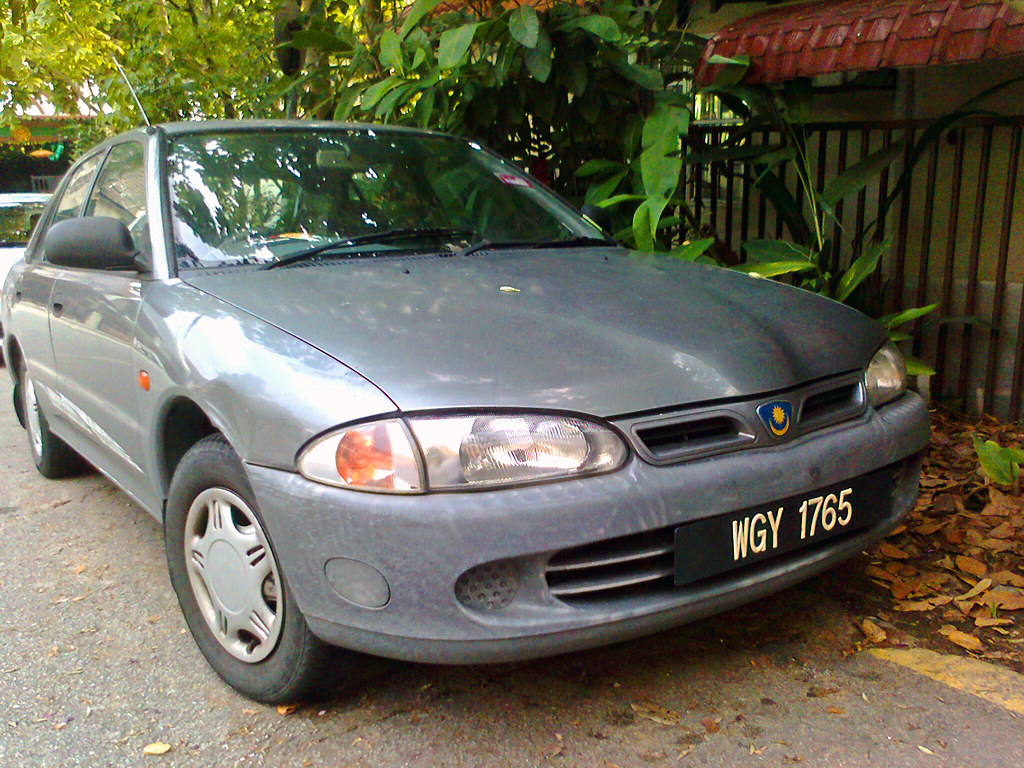
6. **Exploiting Older, Less Sophisticated Security Systems**While cutting-edge technology introduces new vulnerabilities, older vehicles, or even newer models with less advanced baseline security, remain attractive targets due to their less sophisticated anti-theft systems. Many vehicles from “around the turn of the century,” along with certain long-standing popular models, simply lacked the layered security features commonplace today.
This absence of advanced security is a recurring theme. The first-generation Honda CR-V from around 2001, for instance, is noted for being “about as easy to steal as its sedan relative,” the Civic, meaning “it’s very easy to steal.” The security measures of that era simply cannot withstand modern theft techniques or even simpler, brute-force methods.
Similarly, older full-size pickup trucks, despite their robust appearance, often present an easier challenge. The “2004 Chevrolet Silverado” was “the single most stolen vehicle in the U.S. in 2022,” and the “2006 Ford F-150” was its lineage’s most commonly stolen model year. These models from the early to mid-2000s, often equipped with “older keyed ignition systems,” can be outmaneuvered with relative ease compared to vehicles with modern electronic immobilizers.
Security technology has evolved significantly. While a 1997 Honda Accord or a 2000 Honda Civic might offer “reliable basic transportation,” they also offer a less formidable barrier to entry for thieves. Owners of these classic or enduring models are advised to “consider a kill switch or aftermarket immobilizer” to elevate their security and deter opportunistic criminals.
Read more about: Beyond the Wall: Unpacking the 12 Biggest Design Flaws and Ethical Dilemmas of Mark Zuckerberg’s Private Hawaiian Compound
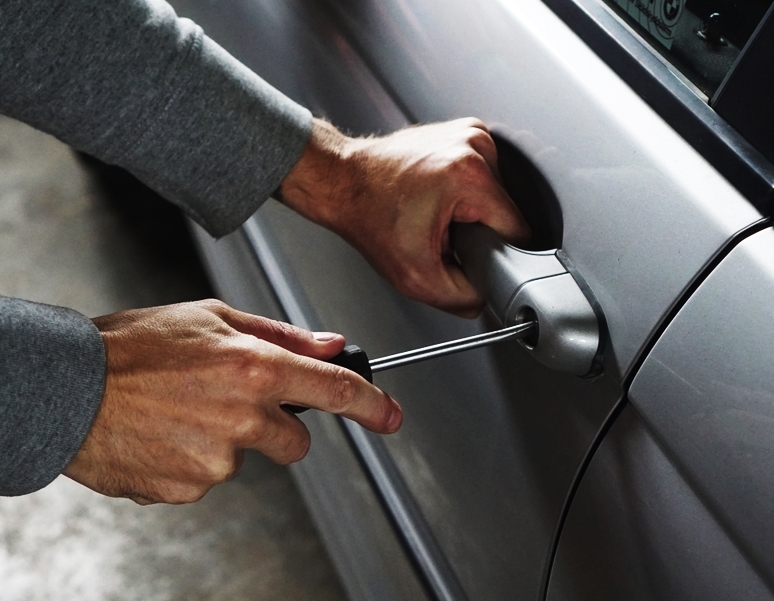
7. **Owner Complacency (Leaving Keys in Vehicle)**Despite sophisticated theft methods, one of the most persistent and common ways a vehicle is stolen stems from simple owner oversight: leaving keys inside. This basic error essentially gifts the car to a thief, bypassing all built-in security and making theft as simple as opening a door and driving away. Security experts are unequivocal: “Always take your key; never leave it in your vehicle.” This seemingly obvious precaution is frequently emphasized, indicating it’s a mistake made too often. Thieves seek the path of least resistance, and an unattended key is the ultimate invitation.
This issue extends beyond traditional keys to modern key fobs. While convenient, “modern fobs can contribute to surprisingly high rates of theft as many owners leave them in the vehicle.” A false sense of security provided by a fob sometimes encourages owners to leave it inside a locked car, unknowingly providing immediate access. The problem is compounded when owners consider areas “safe” or their absence “only for a few minutes.”
Auto theft is often opportunistic; even a brief window of vulnerability suffices. The NICB stresses, “Do not leave your keys in your vehicle,” reinforcing that this oversight, regardless of location or duration, is a primary enabler of theft, giving criminals an unearned advantage. Such a simple act of negligence can nullify all other security measures, making it a critical point of failure for vehicle owners.

8. **Leaving Vehicles Unattended While Running**Even with the most advanced security systems, a moment of convenience can turn into an open invitation for thieves. One of the most glaring vulnerabilities stems from owners leaving their vehicles running, often to warm up on a cold morning, or for what they perceive as a “quick” errand. This seemingly harmless act is, in reality, a high-risk gamble that criminals are all too ready to exploit.
When a vehicle is left idling and unattended, it bypasses virtually every security measure built into it. The ignition is on, the engine is warm, and the only thing standing between a thief and a free ride is an unlocked door. Scenarios like darting into a coffee shop, dropping off a package, or even just stepping away from the car in your own driveway for a moment become prime opportunities for opportunistic criminals looking for the path of least resistance.
The National Insurance Crime Bureau (NICB) consistently advises, “Do not leave the area while your vehicle is running.” This isn’t just a suggestion; it’s a critical rule that, if broken, hands a thief an immediate, effortless advantage. For many auto thefts, especially those that aren’t elaborate, the criminal isn’t planning a complex heist but rather seizing a sudden, easy chance.
Such negligence dramatically increases the likelihood of theft. It transforms a vehicle that might otherwise be difficult to steal into an instant target, negating all the engineering and security layers designed to protect it.
Read more about: Beyond the Shadows: An In-Depth Look at Why Modern Cars Are Being Stolen in Broad Daylight
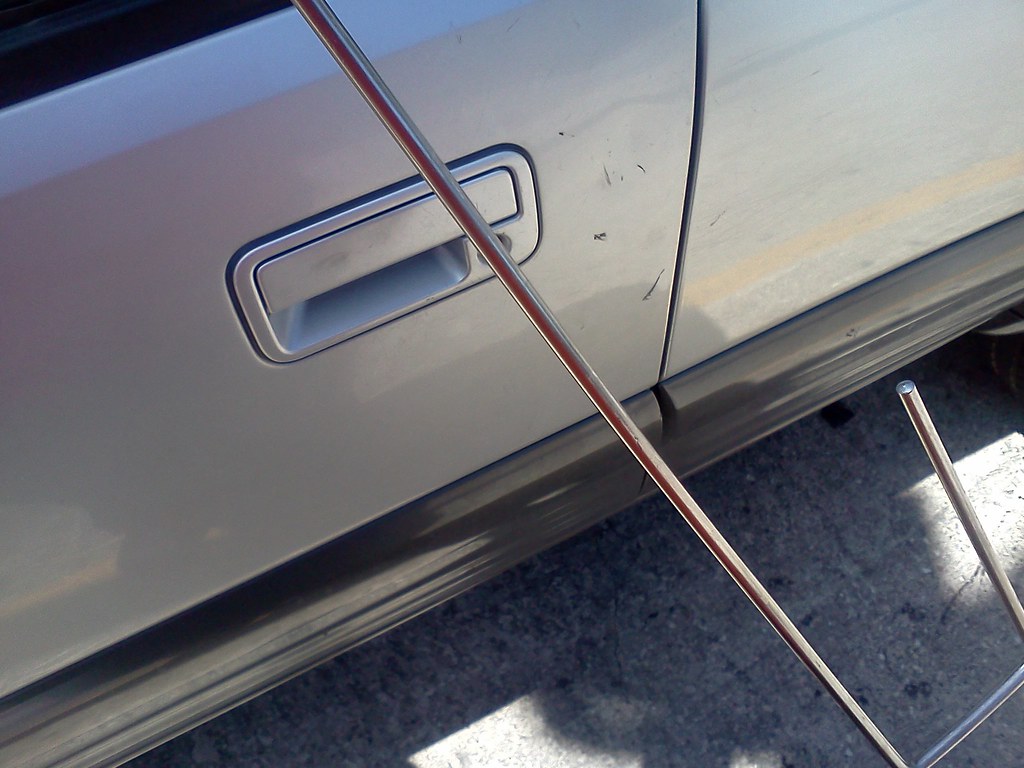
9. **Failing to Secure Entry Points (Unlocked Doors and Open Windows)**While it might seem like common sense, the simple act of locking your car doors and ensuring all windows are fully closed remains one of the most fundamental yet frequently overlooked aspects of vehicle security. In a world of sophisticated tech exploits, sometimes the most basic oversight creates the biggest vulnerability. An unlocked door or a slightly ajar window is an open invitation for a thief.
This elementary error significantly simplifies a criminal’s job, eliminating the need for forced entry or complex digital bypassing. Instead of having to break glass or manipulate locks, a thief can simply open the door and gain immediate access to the vehicle’s interior. This direct entry not only makes the theft quicker but also often leaves fewer traces, complicating recovery efforts.
It’s easy to become complacent, especially when parked in a familiar neighborhood or for a very short duration. We might think a quick run into a store or parking in front of our home for “just a minute” makes it safe to leave a window cracked or a door unlocked. However, thieves are constantly on the prowl, keenly observing for any such lapse in security, ready to act on a moment’s notice.
Vigilance is paramount. Regardless of where you park or how brief your absence, a securely locked vehicle with closed windows serves as your initial and often most effective line of defense. This simple habit acts as a powerful deterrent, signaling to potential thieves that your vehicle is not an easy target and forcing them to reconsider.

10. **Poor Parking Habits**The location where you choose to park your vehicle can be just as critical as its inherent security features in deterring potential thieves. Smart parking decisions can significantly reduce your vehicle’s exposure to risk, while poor choices can unwittingly turn your prized possession into an easy mark. Thieves are predators, and they prefer to hunt in the shadows.
Optimal parking involves selecting “high-traffic, well-lit areas” where your vehicle remains visible and any suspicious activity is more likely to be noticed. Even better are “lots that have security or parking lot attendants,” which introduce an additional layer of human surveillance. These conditions inherently deter criminals, as the increased risk of detection makes their illicit activities far less appealing.
Conversely, parking habits that lean towards convenience over security, such as choosing “the farthest corner of the lot” or seeking out dark, secluded spots, create ideal conditions for theft. Such isolated locations offer thieves the anonymity and uninterrupted time they need to tamper with a vehicle without immediate scrutiny, allowing them to operate with minimal fear of being caught.
To protect your car effectively, the advice is clear: “Keep your vehicle in plain sight.” This simple strategy reduces the window of opportunity for criminals and increases the likelihood that their actions will be observed. It’s a proactive step that leverages the power of visibility and human presence to safeguard your investment.
Read more about: 12 Defining Millennial Flaws: An Objective Look at Generational Weaknesses and Paths to Growth

11. **Predictable Spare Key Locations**The convenience of a spare key, whether for emergencies or shared access, can quickly become a vehicle’s downfall if not handled with extreme caution. Many owners, in an attempt to be prepared, inadvertently create a direct access point for thieves by storing spare keys in predictable, easily discoverable locations within or around their vehicle. This common habit is a severe security lapse.
Leaving a spare key simply “in your car”—perhaps tucked under a seat, in the console, or even in the glove compartment—is an open invitation for theft. Similarly, relying on “a magnetic box attached to the underside of your car” is a dangerously outdated practice. These aren’t clever hiding spots; they are well-known targets for savvy criminals who are intimately familiar with all the common places owners stash their spare keys.
Thieves are constantly learning and adapting. They know the routines and common oversights of vehicle owners, and checking these typical hiding places is often their first course of action after gaining entry to a vehicle, or even before, if they can access the exterior. The discovery of a spare key immediately bypasses all other security measures, making theft as simple as unlocking the door and driving away.
The fleeting convenience of a hidden spare key is profoundly outweighed by the immense security risk it poses. To truly protect your vehicle, it’s imperative to avoid these predictable locations entirely. Store spare keys securely within your home or with trusted individuals, ensuring they are never accessible to opportunistic thieves.
Read more about: Workplace Evolution: 10 Core Practices Gen X Embraced, and How Digital Natives Are Crafting the Future of Work
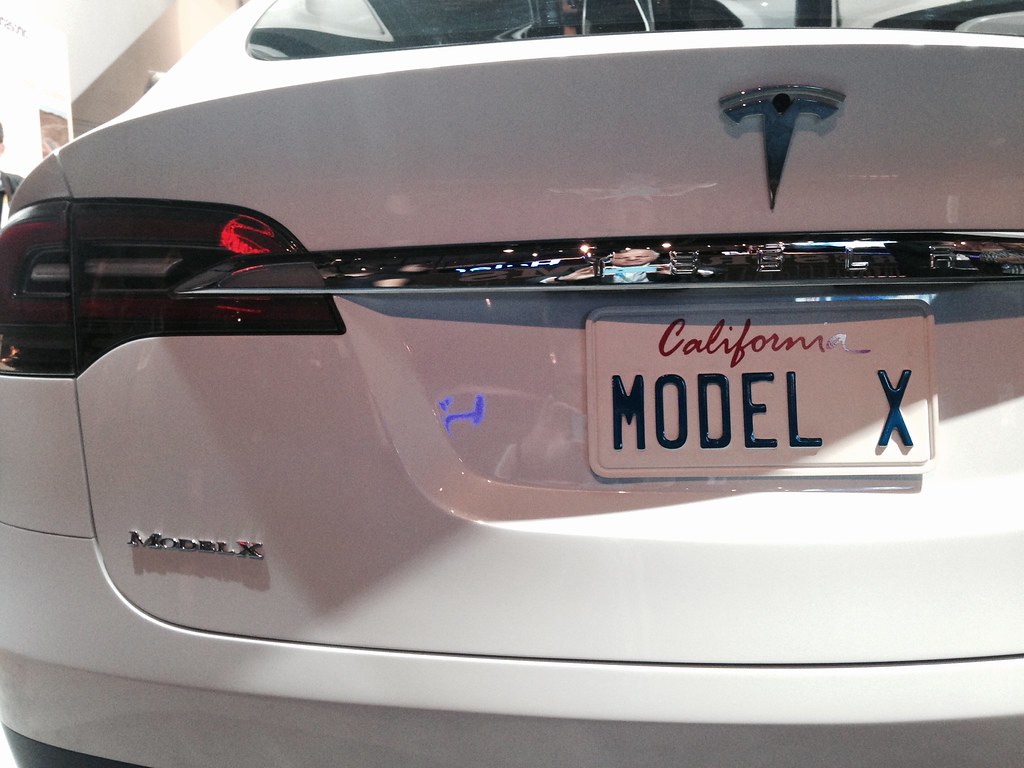
12. **Sophisticated Key Fob Attacks (Relay Attacks)**Modern vehicle technology, while offering unparalleled convenience, also introduces new and often invisible vulnerabilities that require owners’ attention. One such high-tech threat is the “signal-boosting attack,” also known as a relay attack, which targets keyless entry and start systems that rely on constant communication between your key fob and your vehicle.
“Tech-savvy thieves” employ specialized electronic devices to carry out these sophisticated attacks. One device is used to pick up the faint radio signal emitted by your key fob from within your home, while another relay device is placed near your parked vehicle. The signal is then boosted and transmitted, tricking your car into thinking the key fob is present, thus allowing the thieves to “unlock your nearby parked vehicle” and even start the engine without ever physically touching the fob.
Recognizing this growing threat, organizations like AAA offer crucial preventive advice. They recommend storing key fobs “as far away from the vehicle as possible” when at home, minimizing the range for signal interception. More effectively, they suggest placing your fob “in a metal container or bag, which will interrupt the signal.” This simple, low-cost solution creates a ‘Faraday cage’ effect, blocking the signal and rendering relay attack devices useless.
These attacks highlight a critical aspect of modern vehicle security: the need to guard against digital intrusion as diligently as physical forced entry. As cars become more connected, understanding and mitigating these electronic vulnerabilities becomes an indispensable part of protecting your investment from intelligent criminals.

13. **Neglecting Vital Software Updates**In an era where vehicles are essentially complex computers on wheels, the health and security of their operating software are paramount. Just as you wouldn’t ignore updates for your smartphone or laptop, neglecting vital software updates for your car leaves it exposed to known vulnerabilities that manufacturers actively work to patch. This isn’t merely about performance; it’s increasingly about core security.
We’ve already seen examples of manufacturers responding directly to discovered vulnerabilities. General Motors, for instance, proactively released a “body control module software enhancement” for certain 2020 to 2024 Chevrolet Camaro models. This was a direct response to “evolving” theft methods exploiting specific digital weaknesses, demonstrating the ongoing battle between automakers and criminals.
This specific case underscores a broader, critical practice for all vehicle owners. It’s imperative to “Keep your vehicle up to date with software updates, and check with your dealer to ensure all eligible safety and security recalls and technical service bulletins have been performed.” These updates often contain crucial security patches that close loopholes and fortify your car’s defenses against emerging threats.
Failing to install these manufacturer-issued updates essentially leaves the back door open for criminals who actively seek out and exploit unpatched flaws. Proactive software maintenance is no longer a luxury but a fundamental component of a comprehensive vehicle security strategy, ensuring your car’s digital fortress remains robust and resilient against the latest attack vectors.
Read more about: Beyond the Burn: 14 Essential Strategies to Keep Your Gaming Laptop Cool and Maximize Performance

14. **Overlooking Additional Security Measures**While built-in factory security systems have come a long way, relying solely on them can be a missed opportunity to significantly enhance your vehicle’s protection. The most vigilant owners understand the power of layering security, adding supplementary devices that act as both physical deterrents and crucial recovery aids. These additional measures can mean the difference between keeping your car and losing it.
One highly effective, visible deterrent is a “mechanical device that locks the steering wheel, steering column, or brakes.” These devices, such as Club-style locks, are inexpensive, easy to install, and immediately signal to a potential thief that your car will not be an easy grab. The added time and effort required to bypass such a physical barrier often make criminals choose a less protected target.
Beyond prevention, “vehicle theft tracking or security system[s]” offer a powerful recovery tool. Installing a GPS tracker or even a simple device like “an Apple AirTag under the seat” can dramatically improve the chances of locating a stolen vehicle. The National Insurance Crime Bureau (NICB) notes that “one-third of stolen vehicles that were ultimately recovered were found on the same day as the theft,” emphasizing the value of rapid tracking capabilities.
For vehicles known for their vulnerabilities, or older models, “consider a kill switch or aftermarket immobilizer.” These devices can cut off power to the engine or ignition, making it “impossible to start the car without the proper key or electronic signal.” This provides a robust, often hidden, layer of security that can thwart even determined thieves, reinforcing the idea that making your car a hard target is the best defense.
Read more about: Navigating the Financial Maze: Essential Mistakes to Avoid When Funding Your Child’s College Education
The battle against sophisticated car theft is ongoing, but armed with knowledge, owners are far from helpless. As we’ve seen, from high-tech relay attacks to simple oversights like an unlocked door, vulnerabilities exist across the spectrum. Yet, the power to protect these valuable assets lies significantly in our hands. By embracing vigilance, staying informed about security updates, and implementing practical deterrents, we can collectively make our vehicles less inviting targets. Remember, every layer of security, every informed decision, acts as a powerful shield against those who would seek to ‘boost’ your prized possession. Drive smart, stay secure, and keep your wheels firmly where they belong: with you.



